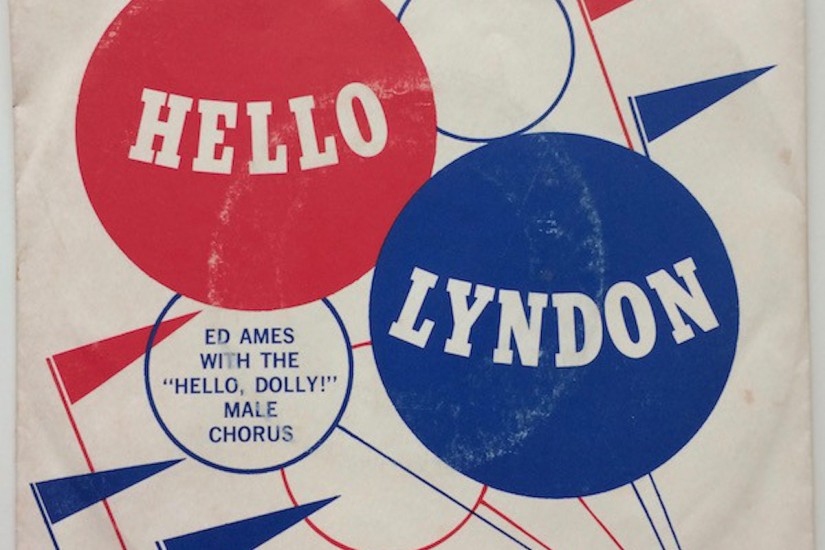“Tippecanoe and Tyler Too”
Alexander Coffman Ross, 1840
Let’s get the obvious out of the way: “Tippecanoe and Tyler Too” is a jam. The first modern song to be expressly tied to a presidential campaign, it celebrated William Henry Harrison’s defeat of Tecumseh during the Indian uprising of 1811 in Indiana Territory. The selling point of Harrison’s “Log Cabin Campaign,” it hurled him into a presidency that would last all of thirty-one days, on account of pneumonia and a questionable treatment by attending surgeons, who relied on something called “Virginia snakeweed,” leeches, and castor oil. It’s just as well; no executive branch in history could live up to “Tippecanoe and Tyler Too,” composed by Alexander Coffman Ross to the tune of “Little Pigs.” A euphonic, infinitely rousing and tidy collection of tetrameters, it says less about the doomed Harrison and eventual President John Tyler than it does about the incumbent Martin Van Buren, whom it lampoons as “little Van, Van, Van, Van,” the “used up man.” Poor Van Buren, meanwhile, was stuck with “Rock-a-bye Baby.”
“The Battle Cry of Freedom”
George Frederick Root, 1862
An object lesson in internecine warfare carried over to sheet music and song interpretation taken to its natural extremes, “The Battle Cry for Freedom” began as a Union ditty and campaign song for the Lincoln-Johnson ticket, only to fall into the hands of the Confederacy, which adapted the lyrics “The Union forever! Hurrah, boys, hurrah! Down with the traitors, and up with the star” to read “Our Dixie forever! She’s never at a loss!/Down with the eagle and up with the cross.” One-hundred-and-fifty years later, it’s hard to see what the fuss was about; the song is a jingoistic and ubiquitous sub-Star Spangled Banner (which would have to wait for Hoover to attain anthem status) even as performed by the likes of Ry Cooder and Elvis Costello, who already had God’s perfect anti-war song in “Oliver’s Army.”
“John Brown’s Body”
Anonymous, 1859
Deemed coarse and irreverent by the prevailing powers of 1861, few songs in American history have gone through so many permutations as “John Brown’s Body.” Built around the tune of “Glory, Hallelujah,” it would appear to be an ode to the insurrectionist behind Bleeding Kansas. It isn’t! Instead, the song emerged as a lark at the expense of a Švejk-like private of the same name serving in the 2nd Infantry Battalion of the Massachusetts militia:
We had a jovial Scotchman in the battalion, named John Brown . . . and as he happened to bear the identical name of the old hero of Harper’s Ferry, he became at once the butt of his comrades. If he made his appearance a few minutes late among the working squad, or was a little tardy in falling into the company line, he was sure to be greeted with such expressions as “Come, old fellow, you ought to be at it if you are going to help us free the slaves.”
None of this prevented an enormous squabble over the song’s authorship that would rage well into the twentieth century, whereupon the tune quickly became untethered from its bizarre origins as a football chorale, a Sinhalese cricket shout, and a sea shanty.
“Harding, You’re the Man For Us”
Al Jolson, 1920
Popular blackface performer Al Jolson inaugurated the mercifully brief era of the home-brewed campaign song in 1920 with “Harding, You’re the Man For Us,” which is even worse than it sounds: “A Man Who’ll Make the White House/ Shine out like a lighthouse/ And Mr. Harding, we’ve selected you/ So it’s Haaaaaarding/ Lead the GOP/ Haaaaarding/ On to Victory,” and so on. It sounds like something that would show up as part of the Country Bear Jamboree: knee slaps, musical jars, and singin’ saws heavily implied. Thirteen years later, FDR would go back to the drawing board with the well-established “Happy Days Are Here Again” from the 1930 flick Chasing Rainbows with Jack Benny, the successor to Jolson’s act as the prevailing antic vaudevillian numb-nuts of the day.
